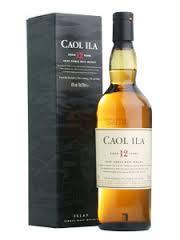Review of Barkan Shiraz Superieur 2006 and Caol Ila, Aged 12 Years, Single Malt Scotch Whisky.
By Joshua E. London and Lou Marmon
Washington Jewish Week August 2015

Besides alcohol, wine contains numerous other natural chemicals. Among these are compounds called polyphenols, of which the most famous is resveratrol which is said to be beneficial. Resveratrol is a compound that provides plants protection from certain diseases, pests and the effects of UV radiation. It is also an anti-oxidant found mostly in the grape skins and leaves and is considered a primary source of many of wine’s health benefits. It is found in highest concentration in red wines because they are produced by prolonged contact with the grape skins. However other substances within wine may also be working alone or together with resveratrol since consumption of resveratrol alone does not appear to provide the same benefits as does drinking wine.
As we’ve noted before, there is an entire literature related to the health benefits of wine and the so-called “French Paradox” (the 1980’s era catchphrase regarding the apparent anomalous epidemiological observation that the French suffer less heart disease than American despite enjoying a more rich, high-fat diet). There are, of course, skeptics, but we’re talking wine here, so who wants to listen to them?
A recently released study indicates that red wine consumption, as part of a diet designed to reduce heart disease and high blood pressure, will also slow brain aging and significantly reduce the risk of Alzheimer’s disease.
To bolster our health and slow our brain aging this week, we are enjoying a glass of the kosher Barkan Shiraz Superieur 2006 ($57) that is just now really hitting its stride. More like Northern Rhone Syrah, than an Australian Shiraz, this hefty Israeli wine opens with earthy raspberry, blackberry and coffee aromas that flow into a complex mélange of spicy currants, dark plum and red cherry flavors accented with oak, pepper and licorice. We feel better already. Now if we could only remember where we left the bottle…
Spirits-wise, our thoughts drift back, as they inevitably do, to Scotland, specifically the isle of Islay. Recently we re-tasted several whiskies from the Caol Ila Distillery, and are reminded just how solid a performer this malt can be. One of us had the great fortune of visiting the distillery a couple of years ago, enjoying its whiskies with distillery manager David Wood.
Established in 1846 by one Hector Henderson, the distillery’s name, Caol Ila, is derived from the Gaelic “Caol Ìle” which means “Islay Strait” or the “Sound of Islay”, as the distillery overlooks the strait between Islay and the island of Jura. The distillery’s fortunes had ebbed and flowed initially, switching hands a few times. By the 1880s production was in full swing, with an annual production of over 147,000 gallons of whisky. It changed hands a fair bit since then too. Today it produces over 800,000 gallons annually.
The distillery was almost entirely demolished in 1972, except for an old warehouse, to make way for a larger, more modern design. It later reopened and resumed production in 1974. Consequently there are those who draw a sharp distinction between the heavier pre-1972 Caol Ila and the lighter, cleaner post-1974 expansion. The distinction is real, but as most of the whisky, both “old” and “new” has gone into blends, there is very little of the “old” whisky to be found today, and nothing at any reasonable price. So the distinction is mostly just an empty posture.
The distillery eventually became part of the United Distillers conglomerate in 1986, which is now part of Diageo. They only began really releasing proprietary single malt bottlings in 1989. For a long while, however, the distillery lived in the shadows of Lagavulin, Diageo’s other Islay distillery. So Caol Ila didn’t really get the respect it deserves until stocks of Lagavulin ran low and the company began begrudgingly to give the Caol Ila range a little more loving attention, all in the last 10 years or so. Even still, the majority of its production still goes to the Johnny Walker and other Diaego-owned blends.
Without further ado, here is the wonderful Caol Ila entry-level dram.
Caol Ila, Aged 12 Years, Single Malt Scotch Whisky ($60; 43 percent ABV): launched in June of 2002, this has proven one of Diageo’s most consistent, “classic malts,” offering a lovely balance of peat, brine and flowery sweetness on the nose, with a palate of clean, peaty goodness balanced with honey and undercooked bread notes, followed by vibrant sweet spices, joined on the nice if mild finish by some slight smoked fish-like notes, salty brine, light peat, and a little black pepper. A lovely oily texture helps bring it all together beautifully. L’Chaim!
